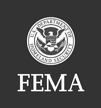release 120202
Winter Weather Patterns Can Increase Risk For Flooding
Take Steps to Prepare Now and Protect Yourself and Your Family
WASHINGTON - Floods are a year-round hazard and do not end when cold weather begins. Although this winter has not yet proven to be as severe as in past years, the coming months can bring about a range of conditions across the country that could affect your community. Areas that receive less snow and rain this winter season may later experience drought-like conditions that, when it does rain, can lead to flash flooding. The onset of seasonal rains and snowmelt can also lead to flooding. FEMA encourages citizens to understand the unique flood risks associated with winter weather, and prepare now with an emergency plan, which may include purchasing flood insurance to protect property and possessions from flood damage. Winter rainy season in the Pacific Northwest consistently delivers intense winter storms and the majority of annual precipitation to that region. Residents may also face an increased risk of flooding and mudslides because of recent wildfires that leave the ground charred and unable to absorb excess water generated by rain and snow. Across the country, particularly in the Midwest and Northeast, heavy snowfall, ice jams, rapid snowmelt, and intense rainstorms caused by fluctuating temperatures can all increase the likelihood and the severity of localized flooding.
The good news is that there are simple steps that citizens can take to address these risks. These include having an emergency supply kit with items such as non-perishable food, water, and a flashlight with batteries, and a family emergency plan that considers your insurance coverage, especially flood insurance. Anyone can visit ready.gov for helpful tips on how to prepare for the risks associated with flooding.
"When it comes to reducing the vulnerability to natural disasters, the whole community has a role to play, and that includes individual citizens," said David Miller, associate administrator for FEMA's Federal Insurance and Mitigation Administration. "One of the most critical ways residents can protect their homes and businesses from the severe weather that may cause flooding is to obtain flood insurance."
Many people mistakenly believe that their homeowners insurance covers flood damage. Only flood insurance financially protects properties from flooding, which is the nation's most common and costly natural disaster. However, it typically takes 30 days for a new flood insurance policy to take effect, so residents should not wait for a storm to strike before purchasing coverage. It only takes a few inches of water in a home or business to cause thousands of dollars of damage. The time to get protected is now.
Between 2006 and 2010, the average flood claim was nearly $34,000. That's more than many survivors can afford to pay out of pocket for damages due to flooding. While no one wants a flood to impact them, with federally backed flood insurance, citizens have an important financial safety net to help cover costs to repair or rebuild if a flood should strike. Individuals can learn more about flood risk and their options for insurance coverage by visiting FloodSmart.gov or by calling 1-800-427-2419.

